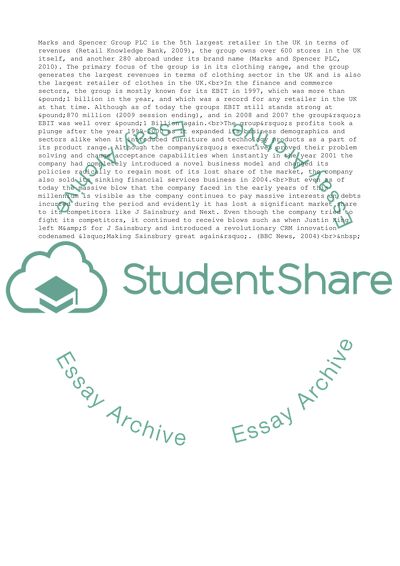Cite this document
(“Marks and Spencer: Retail Sector Essay Example | Topics and Well Written Essays - 3750 words”, n.d.)
Marks and Spencer: Retail Sector Essay Example | Topics and Well Written Essays - 3750 words. Retrieved from https://studentshare.org/business/1562753-depend-on-the-writing-its-about-marks-spencer-group-plc-for-financial-risk-analysis
Marks and Spencer: Retail Sector Essay Example | Topics and Well Written Essays - 3750 words. Retrieved from https://studentshare.org/business/1562753-depend-on-the-writing-its-about-marks-spencer-group-plc-for-financial-risk-analysis
(Marks and Spencer: Retail Sector Essay Example | Topics and Well Written Essays - 3750 Words)
Marks and Spencer: Retail Sector Essay Example | Topics and Well Written Essays - 3750 Words. https://studentshare.org/business/1562753-depend-on-the-writing-its-about-marks-spencer-group-plc-for-financial-risk-analysis.
Marks and Spencer: Retail Sector Essay Example | Topics and Well Written Essays - 3750 Words. https://studentshare.org/business/1562753-depend-on-the-writing-its-about-marks-spencer-group-plc-for-financial-risk-analysis.
“Marks and Spencer: Retail Sector Essay Example | Topics and Well Written Essays - 3750 Words”, n.d. https://studentshare.org/business/1562753-depend-on-the-writing-its-about-marks-spencer-group-plc-for-financial-risk-analysis.


